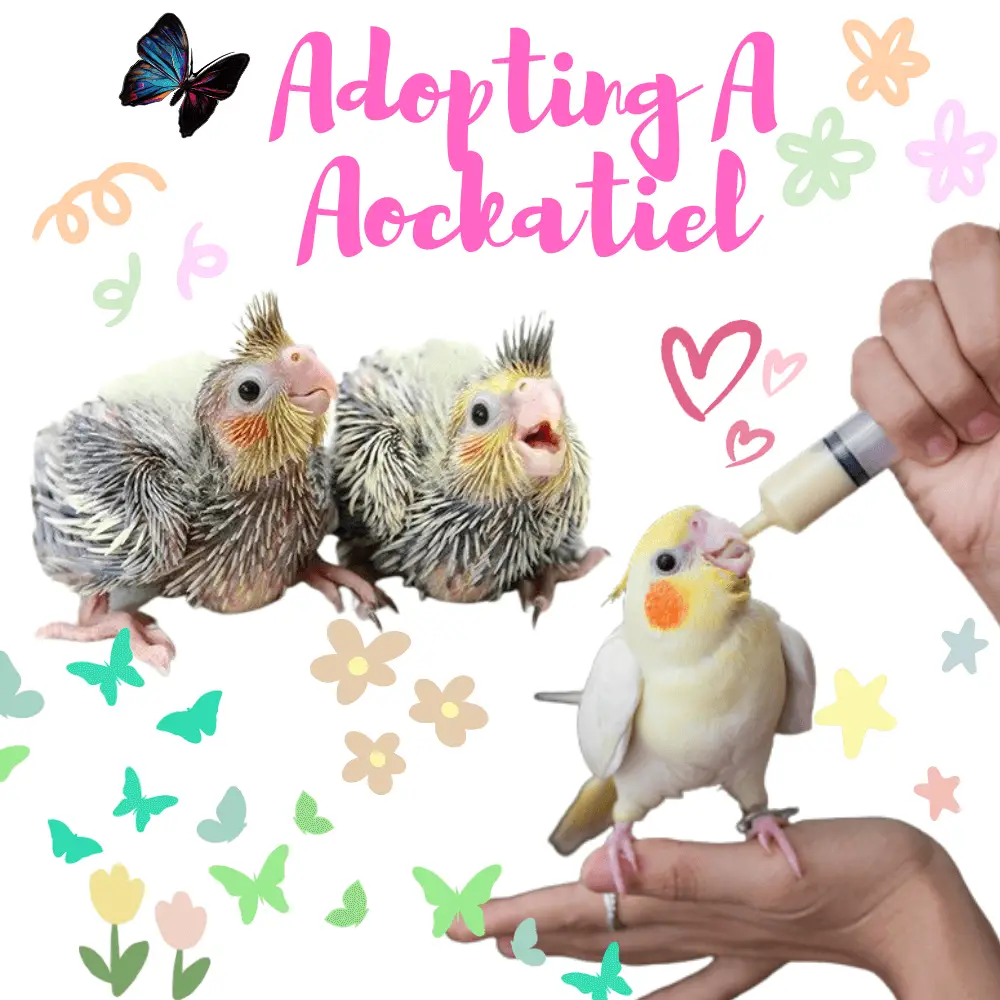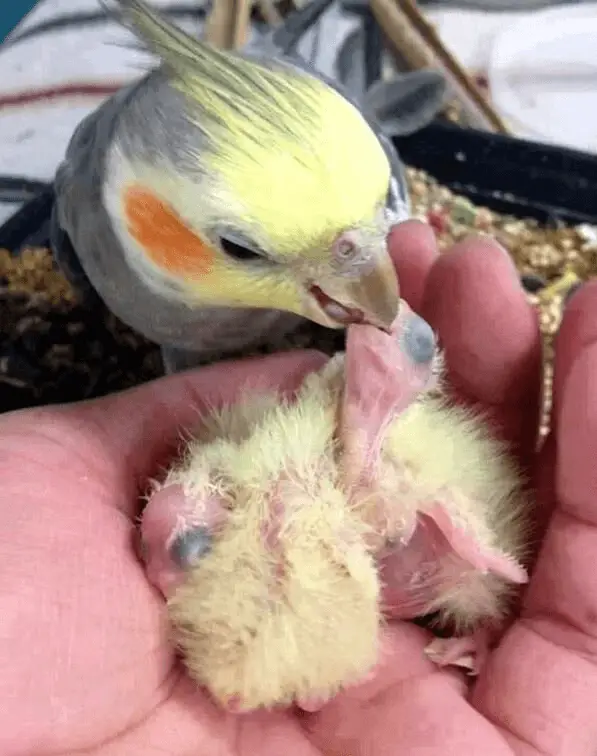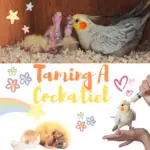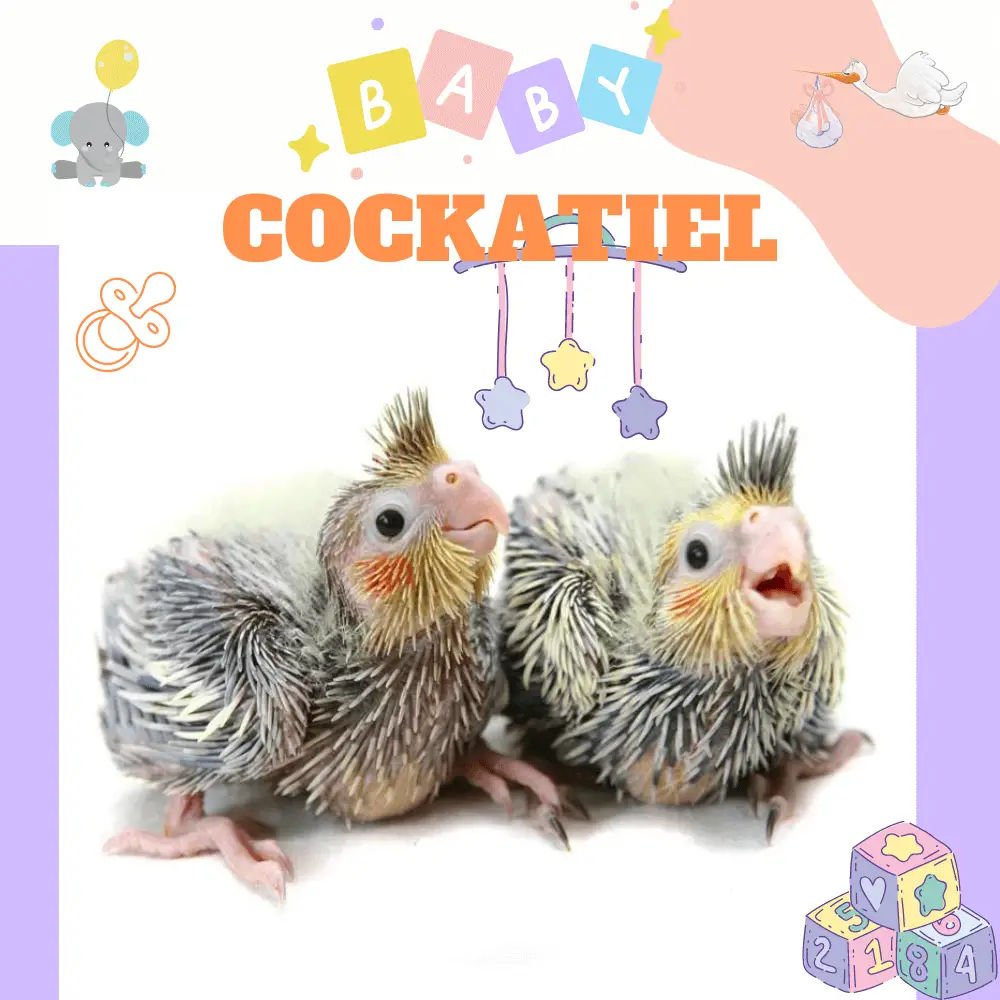
Adopting a cockatiel: In the first place, it is important to specify that the cockatiel is a gregarious animal, this means that it feels a real need to have a congener at its side. It is, therefore, necessary to adopt two (the sexes are indifferent) and this is an important parameter to take into account before embarking on adoption. The loneliness imposed by humans can have deleterious consequences on good health as well as on the psychology of the cockatiel parrot. Note, as an example, that animals deprived of a social partner will report behavioral disorders such as separation anxiety, boredom, feelings of loneliness, frustration or even a pronounced (and noisy) search for attention from their master. All of these disorders are known to contribute to pecking.
For security reasons, inter-species encounters are to be avoided! Your cockatiel parrot needs a cockatiel companion at his side, and not a dog, a rodent, a boa constrictor…

Cockatiel breeding method
Three methods of breeding chicks are available to you:
Hand Raised:
The method is to remove the chicks from their parents from birth to feed them yourself. The cockatiels from this mode of breeding are a priori more sociable with humans and easier to tame. It is therefore possible to find breeders breeding in Hand Raised or even offering to guide you so that you raise one of their birds in Hand Raised yourself. Besides the fact that this method is very radical and not natural, it has major disadvantages. Indeed, the bird impregnated from birth will take itself for a human. This will result in unpleasant deviant behaviors such as a bird trying to breed with you, masturbating on you, screaming as soon as you walk away, or even becoming aggressive once sexual maturity is reached. If EAMs can satisfy you during the first few months, they quickly become difficult to manage on a daily basis.
Raised by Parents:
The Raised by Parents has not (or little) been manipulated by humans. The advantage of this method is that you will have a totally balanced animal, having acquired all the social codes of the species and being able to live in a group without any problem. However, since the RBP bird has never been handled, it usually presents more difficulties in its taming. You will have to go slowly and be patient to gain his trust. Don’t burn the steps!
Manipulated at the Nest:
Manipulated at the Nest Has my preference, in my personal capacity. A Manipulated Nest bird is handled by its breeder every day when the parents are absent from the nest. It is the equivalent of what can be found in the breeding of other animal species such as rodents or dogs: the baby is handled every day for a limited time by the calf, and then handed over to his parents. The advantage of this breeding method is that you will have a cockatiel that has acquired all the necessary social codes but also has first positive contact with humans. However, care must be taken to choose a breeder who will know how to do it correctly, because a negative or traumatic experience can make the relationship between the bird and the man difficult.
Where to adopt a cockatiel?
There are usually 3 sources to adopt a cockatiel: the pet store, the breeder, or the individual. Each has its advantages and disadvantages:
The pet store:
it always has animals available because it is constantly supplied. However, the inadequate living conditions and chain farming that animals undergo make this adoption route unsafe and ethically questionable. Birds can be sick and even have undergone mutilations such as severed wings. You will not have any information about the exact origin, date of birth, or parents of your pet.
The breeder:
idyllically, a breeder is always a reliable and serious person. The breeder must know at his fingertips the animal he is raising and must be a priority source of advice. It can tell you precisely who your cockatiels parents are and their date of birth. However, the reality is a little more complex and a significant number of so-called breeders put money before passion and respect for animals. Do not hesitate to inquire and ask questions to ensure the seriousness of your interlocutor.
The individual:
an individual does not (normally) have money as his primary motivation, he gives birth to some animals for pleasure only and in a limited number. You are (normally, still) assured that animals are life companions before they are breeders. On the other hand, his knowledge is often not comparable to that of a breeder and he may not have the rigor. Again, do not hesitate to ask questions to make sure the seriousness of the person you plan to adopt.
Adopting a cockatiel

Aviary for cockatiels:
The aviary of your cockatiels must be of minimum dimensions:
Length: 100cm (1 meter)
Width: 80cm
Height: 100 cm (1 meter)
It is important to note that height is not the most important parameter. The meshes must not be spaced more than 19x19mm.
It is important to note that the cockatiel is an animal that can live for about fifteen years. It is important to think carefully about its adoption as well as to offer it an environment adapted to its needs.
Of course, the aviary must be properly arranged. To do this, it must be equipped with perches, but also games and feeders. Do not have a nest in the aviary if you do not want cubs or if your animals are not ready for breeding.
A good layout of the perches will both make your animals happy, and will also allow you to reduce cleaning. When setting up your cage, try to arrange the perches in such a way that the droppings fall as much as possible directly to the ground: this will save you from having to rub to clean them! Similarly, arrange the feeders and drinkers above the perches and near a door to allow you to complete them easily.
Perches should always be arranged in groups of two, parallel to each other, to allow birds to fly from one to the other. However, do not place them too close to the edges of the cage: by turning on its perch, the edges could damage the tail feathers of the cockatiels
Neglect plastic perches or sandpaper perch covers: prefer natural wood perches (be careful, some woods are toxic!). Perches must be of various diameters to allow animals to work their fingers.
You can use so plain, white paper, or hemp litter as a cage bottom.
As for toys, it is not necessary to put a lot of toys in the aviary: indeed, it would reduce their flight space accordingly. You can buy a nice swing, a particularly popular toy. Wooden chew toys can also be offered. However, most games can be offered outside the aviary, during outings. You can also offer games based on “foraging”.
The aviary of your birds should not be placed near a crossing point such as a door so as not to unnecessarily stress the animals. Also, avoid placement on draft areas. Finally, if the cockatiels like the brightness, do not place the aviary in a place where the sun hits too hard or without a shadow area.
When it comes to aviary maintenance, it is important to remember that cleaning and disinfecting are not one and the same task. At first, it is necessary to clean the aviary (perches, toys, feeders, drinkers …) to remove dust, and feces … To do this, you can use white vinegar for example, as a detergent.
In a second step and after rinsing, you can move on to the disinfection phase, with Saniterpen for example. Don’t forget to rinse.
Adopting a cockatiel

Food of the cockatiel
What does a cockatiel parakeet eat? The quality of the food is a crucial element for the good health of your cockatiels. Many pathologies (such as fatty liver disease, or fatty disease) are related to a poor diet. The mixture of your cockatiels should not be too greasy, so it should not contain too many peanuts or black sunflower seeds. Some brands of pet food offer a mixture for cockatiels perfectly adapted and that will not require any sorting on the part of the master. To the mixture should be added regularly fruits and vegetables such as apples, kiwi, melon, pineapple, bananas, pomegranates, cherries, oranges, raspberry, watermelon, coconut … Or even: radishes, carrots, endives, broccoli, cucumbers, peppers, corn, turnip… Be careful though, some foods are toxic! Don’t forget to inquire before giving your pets a new food you’re not sure about! In addition, it is good to give sprouted seeds to cockatiels. Callisia is also an edible plant very popular with birds. Finally, leave a cuttlefish bone at your disposal for your birds. Millet branches can be given daily.
Adopting a cockatiel
Cockatiel care: beak and nails
The nails of the cockatiel parrot can sometimes be too long. Therefore, if we imagine that the claws form part of a circle and that we imaginarily complete this circle, the claws must not represent more than a quarter of the circle.
There are commercial perches allowing the wear of the claws, however, it is not recommended to use sandblasted perch covers. In case of necessary intervention, it will be necessary to cut only in the white part of the claw, at the risk of bleeding your cockatiel parrot.
As for the spout, it normally requires no maintenance. Covered with a layer of keratin, the beak is in constant growth from the upper part. This is the reason why it is sometimes possible to observe the lower part crumbling or splitting disappear. Do not hesitate to give cuttlefish bone or a mineral block to your parrot cockatiel during this phase of beak regrowth. Not only is calcium beneficial for regrowth, but the action of eating away at these materials will help the animal maintain its beak.
Baths of the cockatiel
It is possible to offer once a week a bottom of the water in a cup to allow your cockatiels to “wash”. Use warm water and do not leave it available for several days. Contrary to what one might think, wetting the cockatiels during the hot weather is not a good idea! The temperature regulation is carried out under the wings, the feathers are wet and glued by the water creating a real sauna. In summer, offer baths rather than in the evening.
Foods toxic to cockatiel
Here is a (non-exhaustive!) list of foods that should not be given to cockatiels:
- Lawyer
- Rhubarb
- Eggplant
- Potato
- Green Tomato
- Onions
- Lemon
- Grapefruit
- Cabbage
- Beans
In any case, never give food that you do not know the toxicity to your cockatiels, always take the time to inquire before giving food that you are not sure about.
Toxic woods for cockatiels
Here is a (non-exhaustive!) list of woods that should not be placed within reach of the cockatiels:
- Lilac
- Cherry tree
- Cedar
- Laurel
- Boxwood
- Maple
- Privet
- Chestnut
- Holly
- Apricot
- Hydrangea
- Elder
- Chestnut
- Oak
- Virginia creeper
- Cypress
- Ficus
- Yew
- Fish
- Plum
In any case, never use for your cockatiels a wood that you do not have certainty about its non-toxicity.
For example, you can safely use the woods of fruit trees producing citrus fruits, bamboo, birch, fruit vine, apple, pine, walnut …
First Day With My Cockatiel
SOURCE:Soda Pets





















